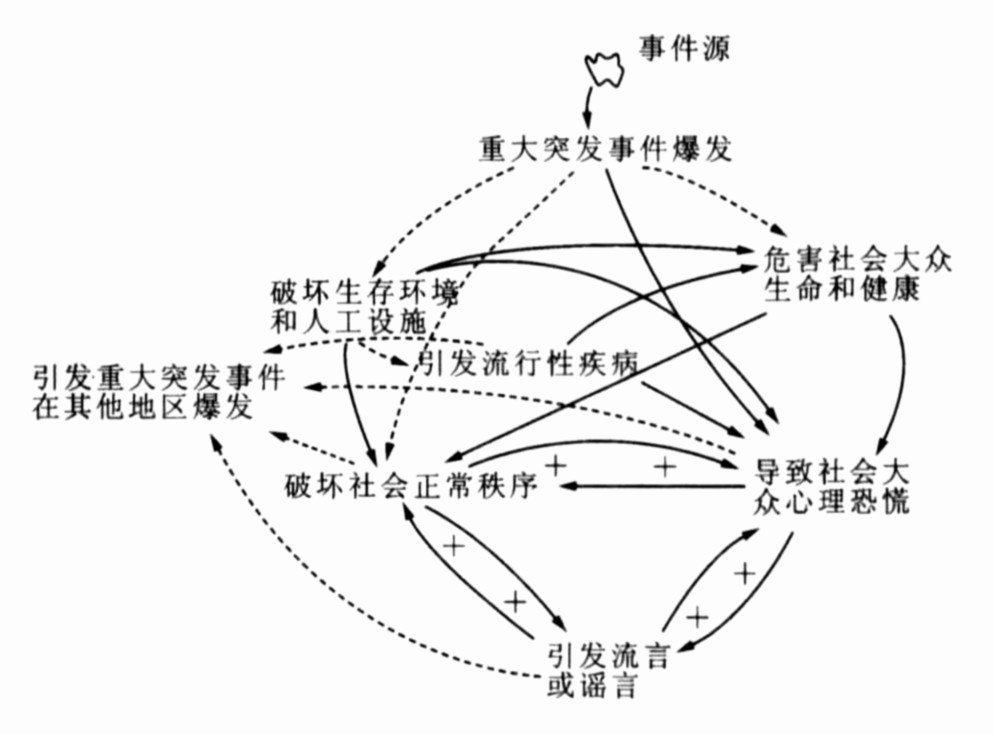Research status and prospect of emergency transportation evacuation
Article Text (Baidu Translation)
-
摘要: 为有序实施交通组织, 提高应急疏散效率, 分析了飓风、洪水等能预警、观望和应对的自然灾害的特性, 研究了国内外突发事件应急疏散的机理、交通组织方法与交通仿真技术应用, 结合北京2008奥林匹克运动会应急疏散预案制定的实际, 确定了适合中国国情和交通运输环境条件的应急疏散规划与管理研究方向, 并建立相应的方法体系。研究结果表明: 中国交通疏散方式应以公共汽车为主, 并需从完善疏散规划方法体系, 整合路径选择、交通控制以及疏散时间计算等交通关键技术着手, 提高交通疏散效率和组织管理水平, 通过交通仿真及ITS技术构建应急交通疏散决策与评价支持系统。Abstract: In order to actualize a well-ordered transportation organization and improve the efficiency of emergency evacuation, the characters of some natural disasters, such as hurricane, flood ect, which could be early warned, observed and treated were analyzed, the mechanisms of emergency evacuation, the methods of traffic organization and the technical application of traffic simulation at home and abroad were studied, and with regard to prepare the emergency evacuation contingency plan for 2008 Olympic Games in Beijing, the research orientation and systematic planning method of emergency evacuation which were fit for Chinese situation and traffic environment were proposed.Analysis result indicates that bus transit should be used as the main transportation evacuation mode in China, transportation evacuation efficiency and organization levels can be improved by perfecting the planning system of emergency evacuation, integrating the key traffic technologies such as route selection, traffic control and evacuation time calculation, and a decision and evaluation system of emergency transportation evacuation is established by applying traffic simulation and ITS technologies.
-
Key words:
- emergency transportation evacuation /
- transport mode /
- route choice /
- traffic control /
- evacuation time /
- traffic simulation /
- review
-
[1] Hodgkinson P E, Stewart M. Coping with Catastrophe: a Handbook of Disaster Management[M]. London: Routledge, 1991. [2] Barrett B, Ran B, Pillai R. Developing a dynamic traffic management modeling framework for hurricane evacuation[C]//TRB. The 79 th Transportation Research Board Annual Meeting. Washington DC: TRB, 2000: 115-121. [3] Choularton R. Complex organizational learning from disasters[J]. Safety Science, 2001, 39(8): 61-70. [4] 吴国斌, 王超. 重大突发事件扩散的微观机理研究[J]. 软科学, 2005, 19(6): 4-7. doi: 10.3969/j.issn.1001-8409.2005.06.002Wu Guo-bin, Wang Chao. Aresearch on the diffusion micro-mechanism of important emergencies[J]. Soft Science, 2005, 19(6): 4-7. (in Chinese) doi: 10.3969/j.issn.1001-8409.2005.06.002 [5] Hu Hong, Liu Xiao-ming, Yang Xiao-kuan. Study on building up scientific andrational emergency management mechanismin China[C]//Zhu Xiao-ning. Proceedings of International Conference on Public Administration. Chengdu: Press of University of Electronic Science and Technology of China, 2006: 391-397. [6] 国务院. 国家突发公共事件总体应急预案[EB/OL]. [2008-01-02]. http://www.china.com.cn/chinese/law/1086058.htm. [7] Baker E J. Hurricane evacuation in the United States[R]. Tallahassee: Florida State University, 1998. [8] Sorensen J H, Vogt B M, Mileti DS. Evacuation: an assessment of planning and research[R]. Washington DC: Oak Ridge National Laboratory, 1987. [9] Church R L, Cova TJ. Mapping evacuation risk ontransportation networks using a spatial opti mization model[J]. Transportation Research Part C, 2000, 8(1): 321-336. [10] Rashid H, Haider W, Hunt L. Post-flood assessment of emergency evacuation policies in the Red River Basin, Southern Manitoba[J]. Canadian Geographer, 2000, 44(2): 369-386. [11] Knowles L. Sydney bushfire emergency evacuation: analysis of qualitative research conducted with home owners in bush-fire-prone areas[R]. Califorlia: Institute of Transport Studies Internal Publication, 2003. [12] Dow K, Cutter S L. Public orders and personal opinions: household strategies for hurricane risk assessment[J]. Environmental Hazards, 2000, 2(4): 143-155. doi: 10.1016/S1464-2867(01)00014-6 [13] Southworth F, Chin S M. Network evacuation modeling for flooding as a result of damfailure[J]. Environment and Planning, 1987, 19(11): 1543-1558. doi: 10.1068/a191543 [14] Franzese O, Han L D. Traffic modeling frame work for hurricane evacuation[C]//TRB. The 80 th Transportation Research Board Annual Meeting. Washington DC: TRB, 2001: 591-597. [15] Dunn C E, Newton D. Optimal routes in GIS and emergency planning applications[J]. Area, 1992, 24(3): 259-267. [16] Yamada T. A network of approach to a city emergency evacuation planning[J]. International Journal of Systems Science, 1996, 27(10): 931-936. doi: 10.1080/00207729608929296 [17] Campos V E G, da Silva P A L, Netto P O B. Evacuation transportation planning: a method of identifying optimal independent routes[C]//Surcharov L J. Proceedings of Urban Transport V: Urban Transport and the Environment for the 21 st Century. Southampton: WIT Press, 2000: 555-564. [18] Cova TJ, Johnson J P. Anetwork flow model for lane-based evacuation routing[J]. Transportation Research Part A, 2003, 37(1): 579-604. [19] Yang Sai-ni. An on-line emergency vehicle dispatching and routing model with area coverage constraints[C]//TRB. The 84 th Transportation Research Board Annual Meeting. Washington DC: TRB, 2005: 841-845. [20] Urbina E, Wolshon B. National review of hurricane evacuation plans and policies: a comparison and contrast of state practices[J]. Transportation Research Part A, 2003, 37(3): 257-275. [21] Heath S E, Kass P H, Beck A M, et al. Human and pet related risk factors for household evacuation failure during a natural disaster[J]. American Journal of Epidemiology, 2001, 153(7): 659-665. doi: 10.1093/aje/153.7.659 [22] Southworth F. Regional evacuation modeling: a state of the art review[R]. Washington DC: Oak Ridge National Laboratory, 1991. [23] Alsnih R, Stopher P R. Areview of the procedures associated with devising emergency evacuation plans[C]//TRB. The83th Transportation Research Board Annual Meeting. Washington DC: TRB, 2004: 865-868. [24] Hobeika A G, Changkyun K. Comparison of traffic assignments in evacuation modeling[J]. IEEE Transactions on Engineering Management, 1994, 45(2): 192-198. [25] Stern E, Sinuany-Stern Z. A behavioral-based simulation model for urban evacuation[J]. Papers of the Regional Science Association, 1989, 66(2): 87-103. [26] Sinuany-Stern Z, Stern E. Si mulating the evacuation of a small city: the effects of traffic factors[J]. Socio-Economic Planning Sciences, 1993, 27(2): 97-108. doi: 10.1016/0038-0121(93)90010-G [27] Church R L, Sexton R M. Modeling small area evacuation: can existing transportation in frastructure impede public safety?[R]. Santa Barbara: University of California, 2000. [28] Cova T J, Johnson J P. Microsimulation of neighborhood evacuations in the urban-wildl and interface[J]. Environment and Planning, 2002, 34(12): 2211-2229. doi: 10.1068/a34251 [29] Batty M, Desyllas J, Duxbury E. The discrete dynamics of small-scale spatial events: agent-base models of mobility in carnivals and street parades[R]. London: Centre for Advanced Spatial Analysis, 2002. [30] Chen X, Zhan F B. Agent-based modeling and simulation of urban evacuation: relative effectiveness of simultaneous and evacuation strategies[C]//TRB. The 83 rd Transportation Research Board Annual Meeting. Washington DC: TRB, 2004: 669-674. [31] 万庆, 励惠国. 蓄洪区灾民撤退过程动态模拟(Ⅰ)——技术与方法研究[J]. 地理学报, 1995, 50(12): 62-68. https://www.cnki.com.cn/Article/CJFDTOTAL-DLXB5S1.006.htmWan Qing, Li Hui-guo. Dynamic simulation of victi mevacuation in detension basin(Ⅰ)—technology and method research[J]. Acta Geographica Sinica, 1995, 50(12): 62-68. (in Chinese) https://www.cnki.com.cn/Article/CJFDTOTAL-DLXB5S1.006.htm [32] 万庆, 励惠国. 蓄洪区灾民撤退过程动态模拟(Ⅱ)——君山农场灾民撤退模拟研究[J]. 地理学报, 1995, 50(12): 69-74. https://www.cnki.com.cn/Article/CJFDTOTAL-DLXB5S1.007.htmWan Qing, Li Hui-guo. Dynamic simulation of victi mevacuation in detension basin(Ⅱ)—study on victim in Junshan farm[J]. Acta Geographica Sinica, 1995, 50(12): 69-74. (in Chinese) https://www.cnki.com.cn/Article/CJFDTOTAL-DLXB5S1.007.htm [33] 徐高. 人群疏散的仿真研究[D]. 成都: 西南交通大学, 2003. [34] Hu Hong, Yang Xiao-kuan, Liu Xiao-ming. Si mulation on emergency evacuation plan for2008Beijing Olympic Games[C]//Southwest Jiaotong University. Proceedings of the First International Conference of Transportation Engineering(ICTE). Chengdu: Press of Southwest Jiaotong University, 2007: 673-679. [35] 许焱, 荣建, 刘小明, 等. 2008年北京奥运会交通需求预测[J]. 北京工业大学学报, 2003, 29(3): 315-319. doi: 10.3969/j.issn.0254-0037.2003.03.013Xu Yan, Rong Jian, Liu Xiao-ming, et al. Beijing transportation demandforcast of the 29 th Olympic Games[J]. Journal of Beijing University of Technology, 2003, 29(3): 315-319. (in Chinese) doi: 10.3969/j.issn.0254-0037.2003.03.013 [36] 北京工业大学交通研究中心. 奥运交通规划(2002A404A)[R]. 北京: 北京工业大学, 2004. [37] 许焱, 杨孝宽, 刘小明, 等. 2008年奥运会交通紧急事件管理系统(EMS)规划[J]. 北京工业大学学报, 2005, 31(5): 481-485. doi: 10.3969/j.issn.0254-0037.2005.05.008Xu Yan, Yang Xiao-kuan, Liu Xiao-ming, et al. Plan of the 29 th Olympic Games transport emergency management system[J]. Journal of Beijing University of Technology, 2005, 31(5): 481-485. (in Chinese) doi: 10.3969/j.issn.0254-0037.2005.05.008 [38] 胡红, 刘小明, 杨孝宽. 基于最小安全间距的应急交通疏散车辆跟驰模型[J]. 北京工业大学学报, 2007, 33(10): 1070-1074. https://www.cnki.com.cn/Article/CJFDTOTAL-BJGD200710015.htmHu Hong, Liu Xiao-ming, Yang Xiao-kuan. Acar-following model of emergency evacuation based on minimumsafety distance[J]. Journal of Beijing University of Technology, 2007, 33(10): 1070-1074. (in Chinese) https://www.cnki.com.cn/Article/CJFDTOTAL-BJGD200710015.htm [39] Han D L, Yuan F. Evacuation modeling and operations using dynamic traffic assignment and most assignment and most desirable destination approaches[C]//TRB. The 84 th Transportation Research Board Annual Meeting. Washington DC: TRB, 2005: 964-969. [40] William L, Breckinridge VI I, Najafi F T, et al. Asummary review on the importance of transportation planning reparation and execution during a mass evacuation[C]//TRB. The 86 th Transportation Research Board Annual Meeting. Washington DC: TRB, 2007: 974-980. [41] Lit man T. Lessons from Katrina and Rita: what major disasters can teach transportation planners[J]. Journal of Transportation Engineering, 2006, 132(1): 11-18. doi: 10.1061/(ASCE)0733-947X(2006)132:1(11) [42] Renne J. Evacuation and equity: a post-Katrina New Orleans diary[J]. Planning, 2006, 72(5): 33-42. -





 下载:
下载:



